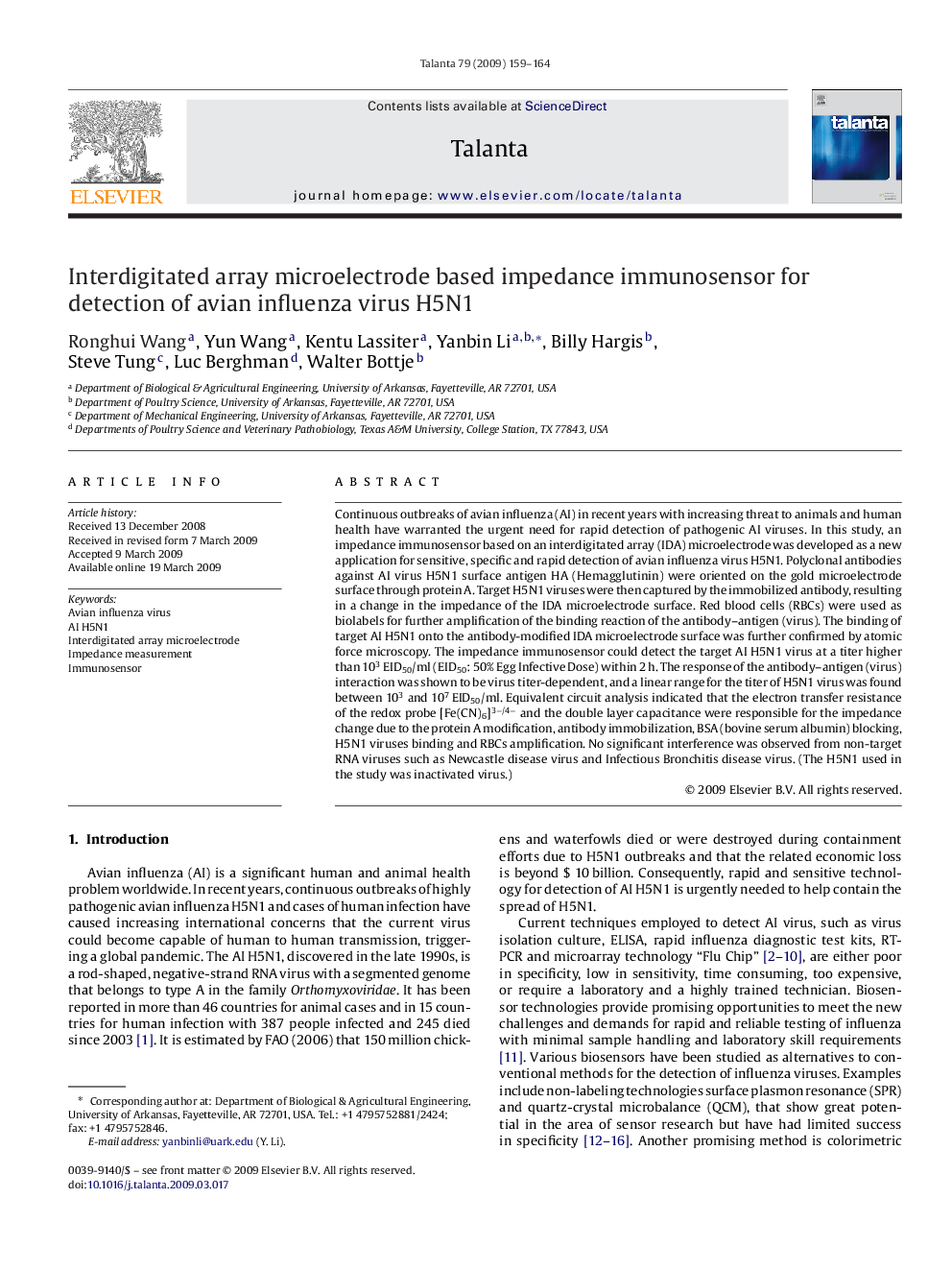| Article ID | Journal | Published Year | Pages | File Type |
|---|---|---|---|---|
| 1244781 | Talanta | 2009 | 6 Pages |
Continuous outbreaks of avian influenza (AI) in recent years with increasing threat to animals and human health have warranted the urgent need for rapid detection of pathogenic AI viruses. In this study, an impedance immunosensor based on an interdigitated array (IDA) microelectrode was developed as a new application for sensitive, specific and rapid detection of avian influenza virus H5N1. Polyclonal antibodies against AI virus H5N1 surface antigen HA (Hemagglutinin) were oriented on the gold microelectrode surface through protein A. Target H5N1 viruses were then captured by the immobilized antibody, resulting in a change in the impedance of the IDA microelectrode surface. Red blood cells (RBCs) were used as biolabels for further amplification of the binding reaction of the antibody–antigen (virus). The binding of target AI H5N1 onto the antibody-modified IDA microelectrode surface was further confirmed by atomic force microscopy. The impedance immunosensor could detect the target AI H5N1 virus at a titer higher than 103 EID50/ml (EID50: 50% Egg Infective Dose) within 2 h. The response of the antibody–antigen (virus) interaction was shown to be virus titer-dependent, and a linear range for the titer of H5N1 virus was found between 103 and 107 EID50/ml. Equivalent circuit analysis indicated that the electron transfer resistance of the redox probe [Fe(CN)6]3−/4− and the double layer capacitance were responsible for the impedance change due to the protein A modification, antibody immobilization, BSA (bovine serum albumin) blocking, H5N1 viruses binding and RBCs amplification. No significant interference was observed from non-target RNA viruses such as Newcastle disease virus and Infectious Bronchitis disease virus. (The H5N1 used in the study was inactivated virus.)
